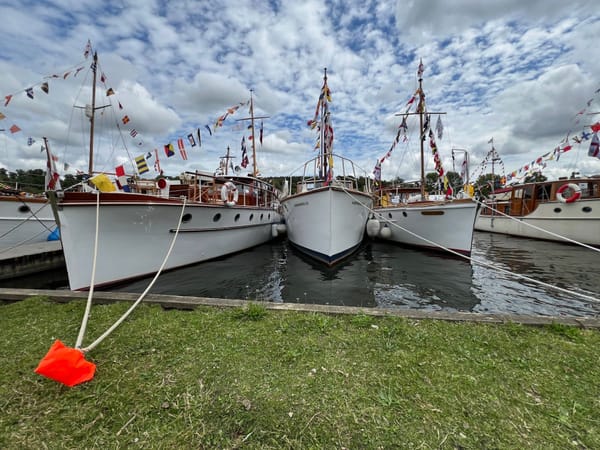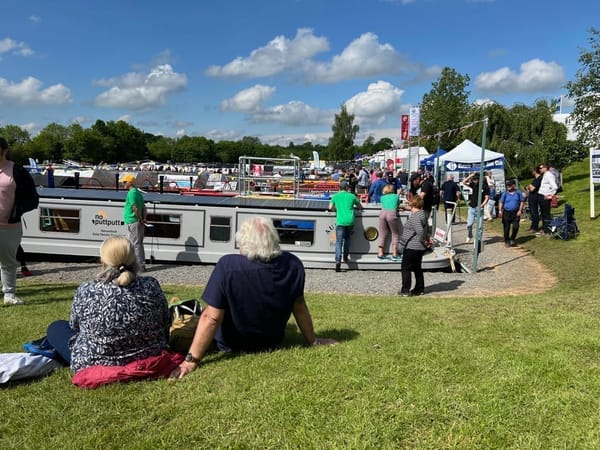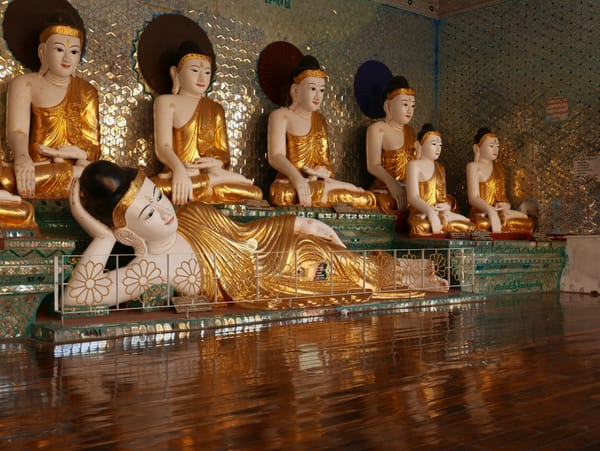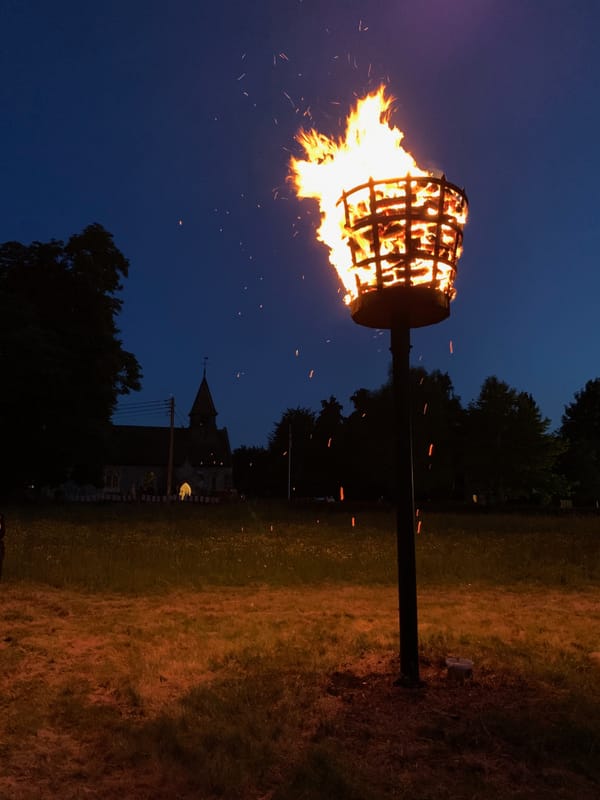Vietnam — Dinh Thống Nhất (Independence Palace / Reunification Palace), Ho Chi Minh City (Saigon), Vietnam — part 1 of 2
A palace I remember seeing in the evening news when I was a kid
September 2015
Confusing — was it Dinh Độc Lập or Dinh Thống Nhất? Anyway, I do know it is called Independence Palace, or is it Reunification Palace?
This was one of those places I visited in Vietnam that I felt I recognised from some deep memory.
When I was a small boy, the Vietnam War was coming to an end. I was too young to understand or even be aware of the war. I remember some images in the evening news and my dad's newspaper, but that was about it.
Maybe the memories I have of the news items and photographs in the newspaper of the Vietnam War are false. Perhaps what I’m remembering are images from war movies or documentaries? But, when I went to Dinh Thống Nhất (Independence Palace / Reunification Palace), I thought I recognised the place.
The Dinh Thống Nhất (Independence Palace / Reunification Palace) was a stunning building and a fine example of 1960s architecture.
The Palace occupies the site of the former residence of the French colonial Governor-General. Following the Geneva Accord of 1954, the residence was renamed Independence Palace and became the home of the first President of the new Saigon Republic, Ngo Dinh Diem.
The Palace was bombed on 27 February 1962, and President Diem commissioned the architect Ngo Viet Thu (1927-2000) to design and build a new palace. Construction of the new Palace took four years, with a six-month suspension of work in 1963 after the assassination of President Diem.
The Palace occupies 4,500 m² of a 12-hectare park, contains 95 rooms with an interior space of 20,000 m², and consists of traditions of Vietnamese architecture with modern designs. The Palace was built with a combination of concrete and wooden embellishments.
The palace was declared a National Site in 1976 and became a “Special National Site” in 2009. The Palace was first opened to the public in 1990.
When visiting the Palace, you should know that the “tour map” is incorrect. The best thing to do is to follow the marker arrows, which are not always obvious.
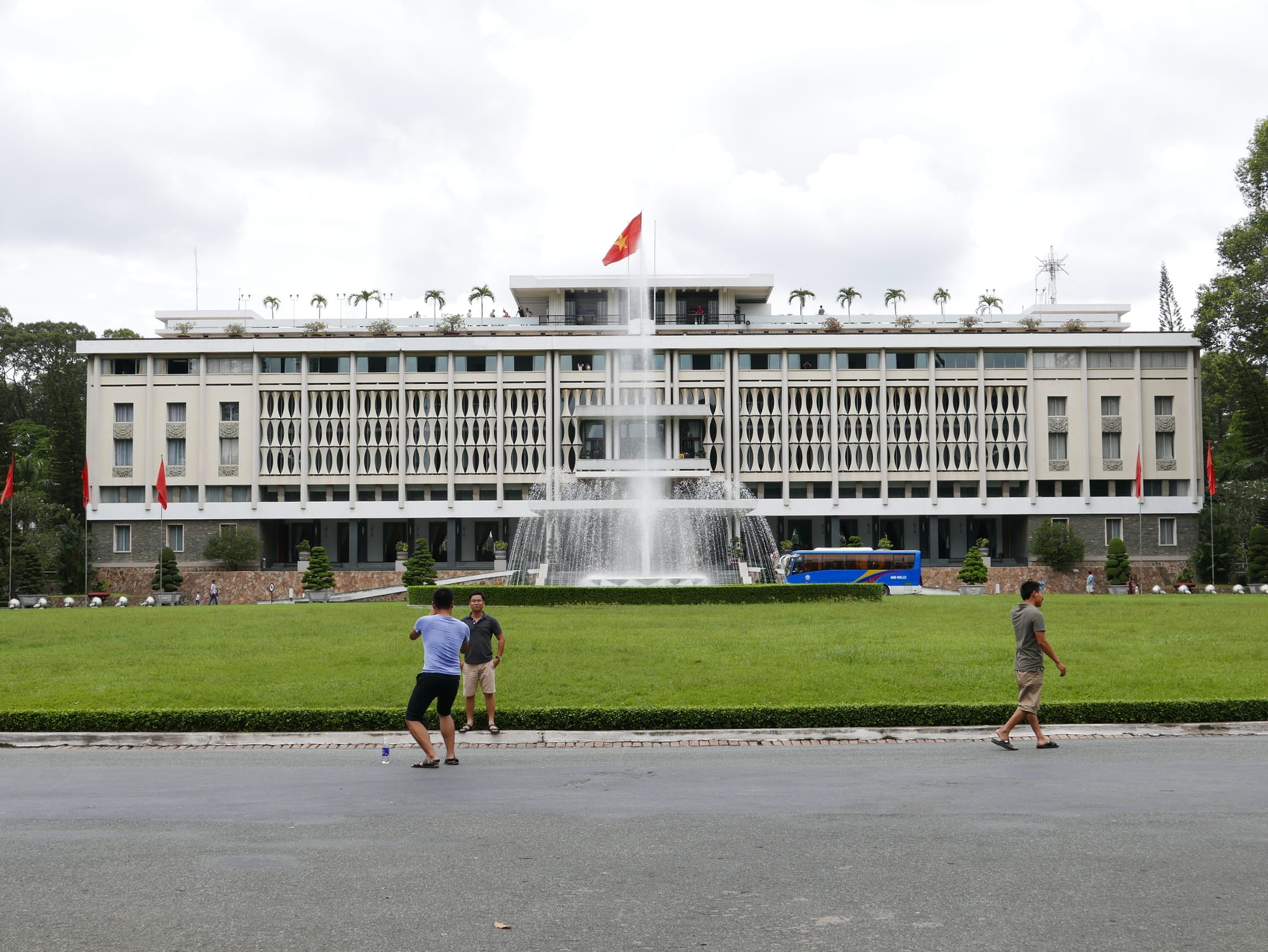
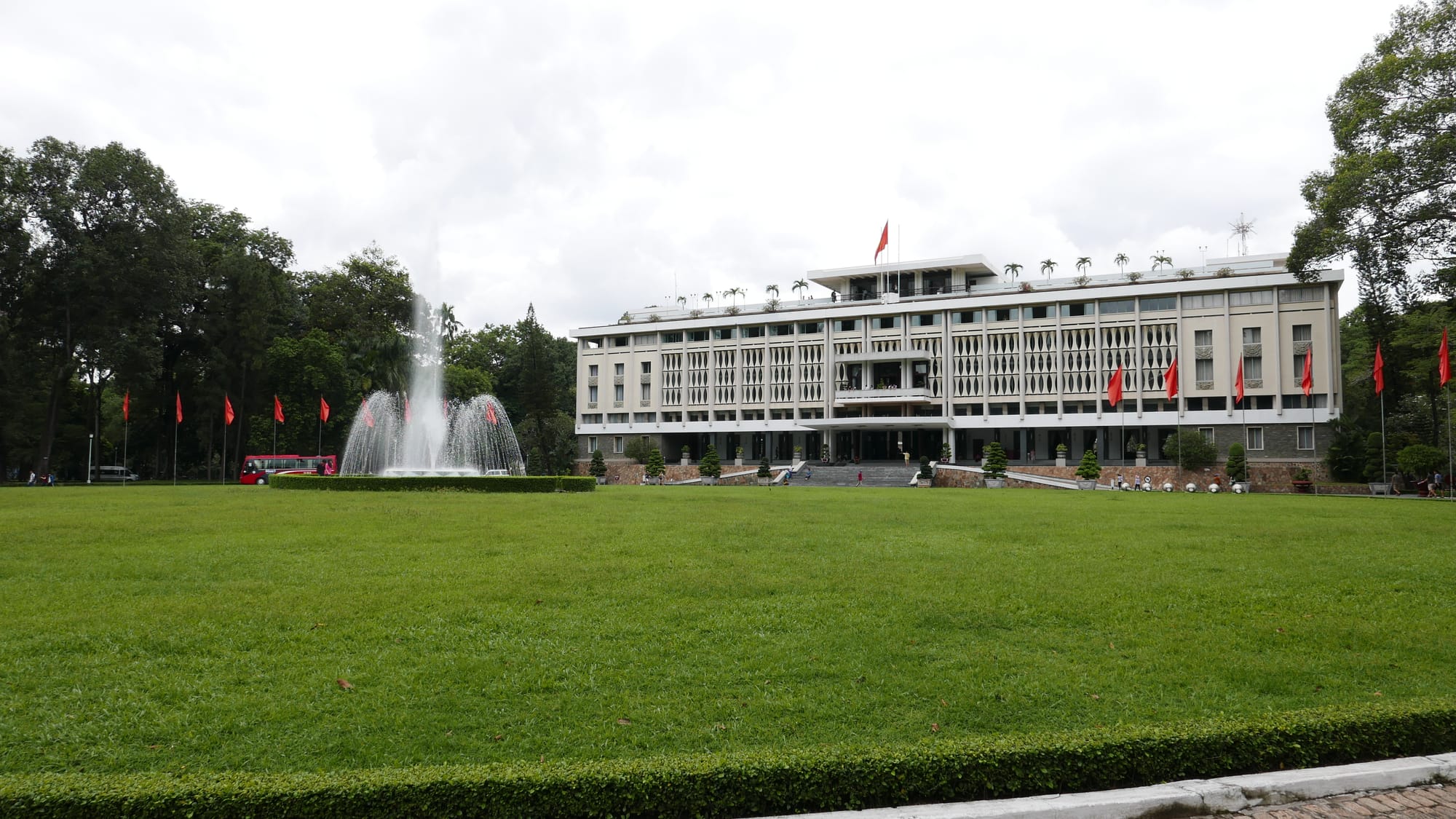
On the grounds, there are still some reminders of the Vietnam War, such as a parked tank.
The tank is identical to the vehicles used by the Tank Corp 203, 2nd Army, which broke through the palace gates on 30 April 1975.
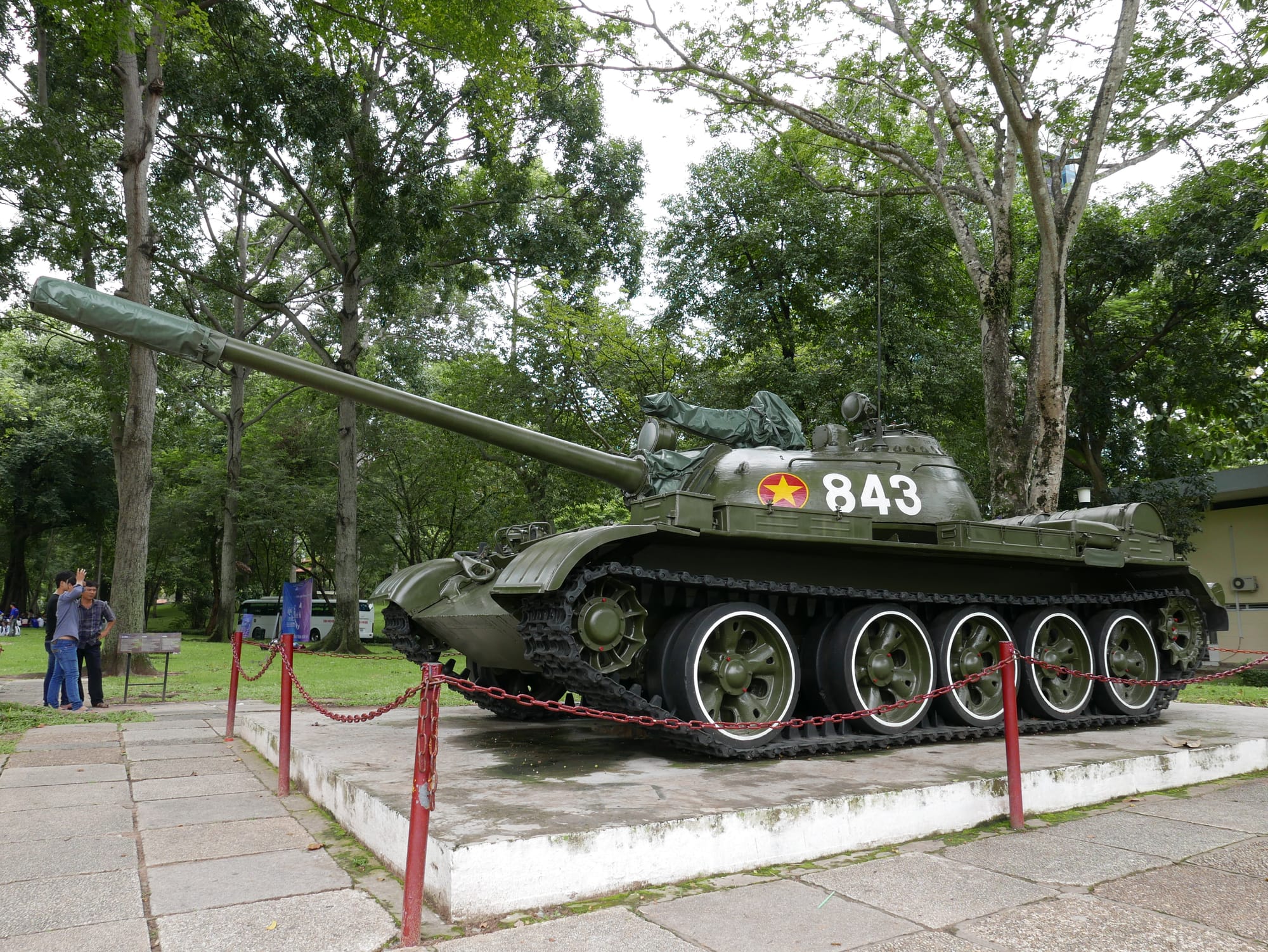
There is also a fighter jet.
The F5E fighter, pictured below, is like the one flown by Lt. Nguyen Thanh Trung, which bombed the Palace on 8 April 1975. Lt. Trung was a member of the Vietnamese Communist Party and had infiltrated the Southern Republic Air Force.
Lt. Trung dropped two bombs on the Palace, and from the marked bomb positions on the Palace (see below), it would appear that Lt. Trung was going for the private quarters at the back of the main building. The raid damaged the helipad on the upper terrace of the Palace and the main central staircase.
After the raid, Lt. Trung flew onto an improvised airstrip prepared by the Liberation Forces.
The raid undermined the Republic’s authority and prompted the start of the withdrawal of the last Americans in, as it was then, Saigon (Ho Chi Minh City).
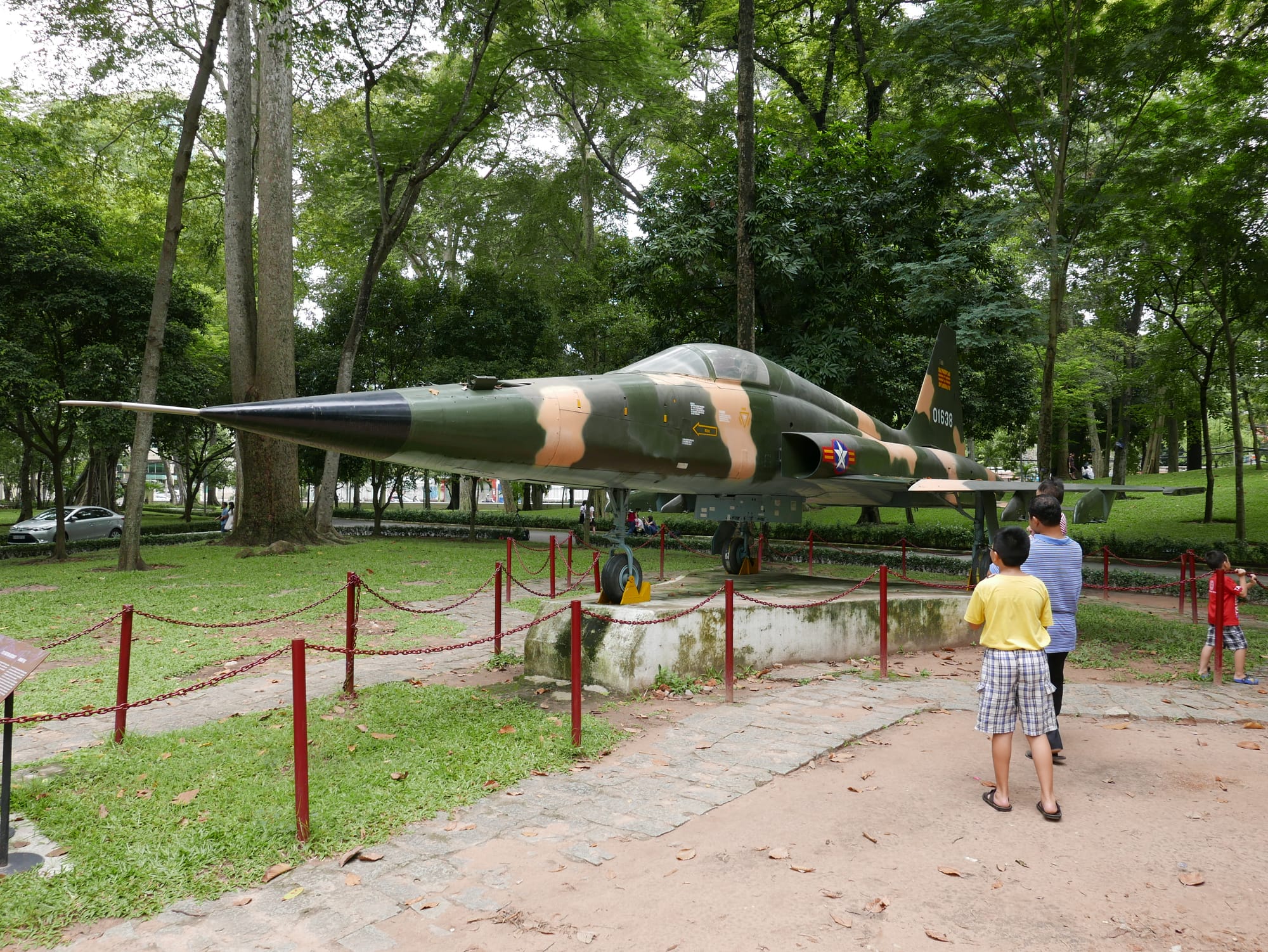
The image below shows the impact point of the two bombs dropped from Lt. Trung’s plane on 8 April 1975.
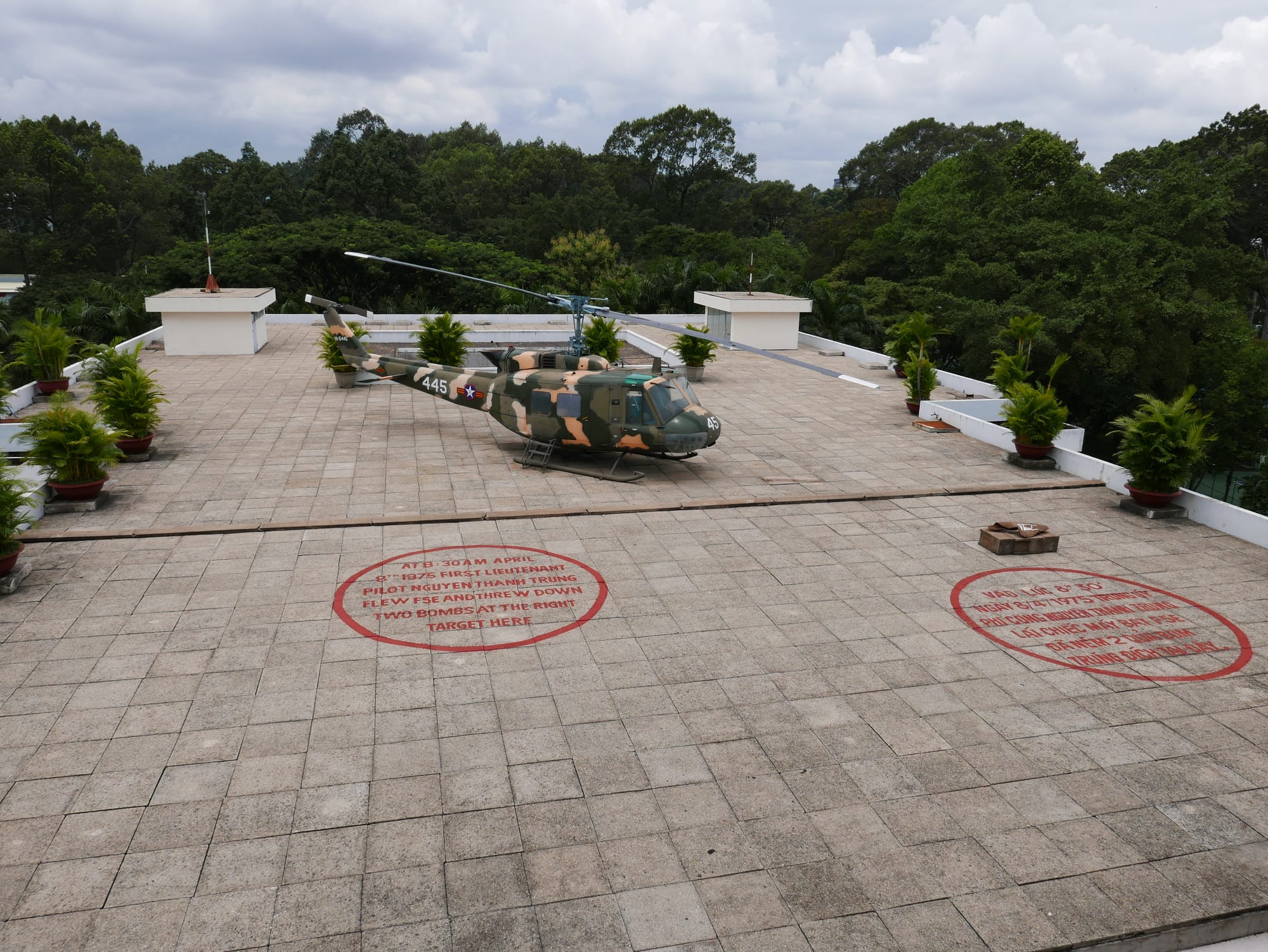
The interior of the Palace was interesting as it had a real 1970s feel to it.
Below is a photograph of the State Banqueting Hall. The hall can hold up to 100 guests. The last State to Dinner was held in the room on 1 March 1975 for a US congressional delegation visiting Vietnam to report on the prospects of continued support for the government.
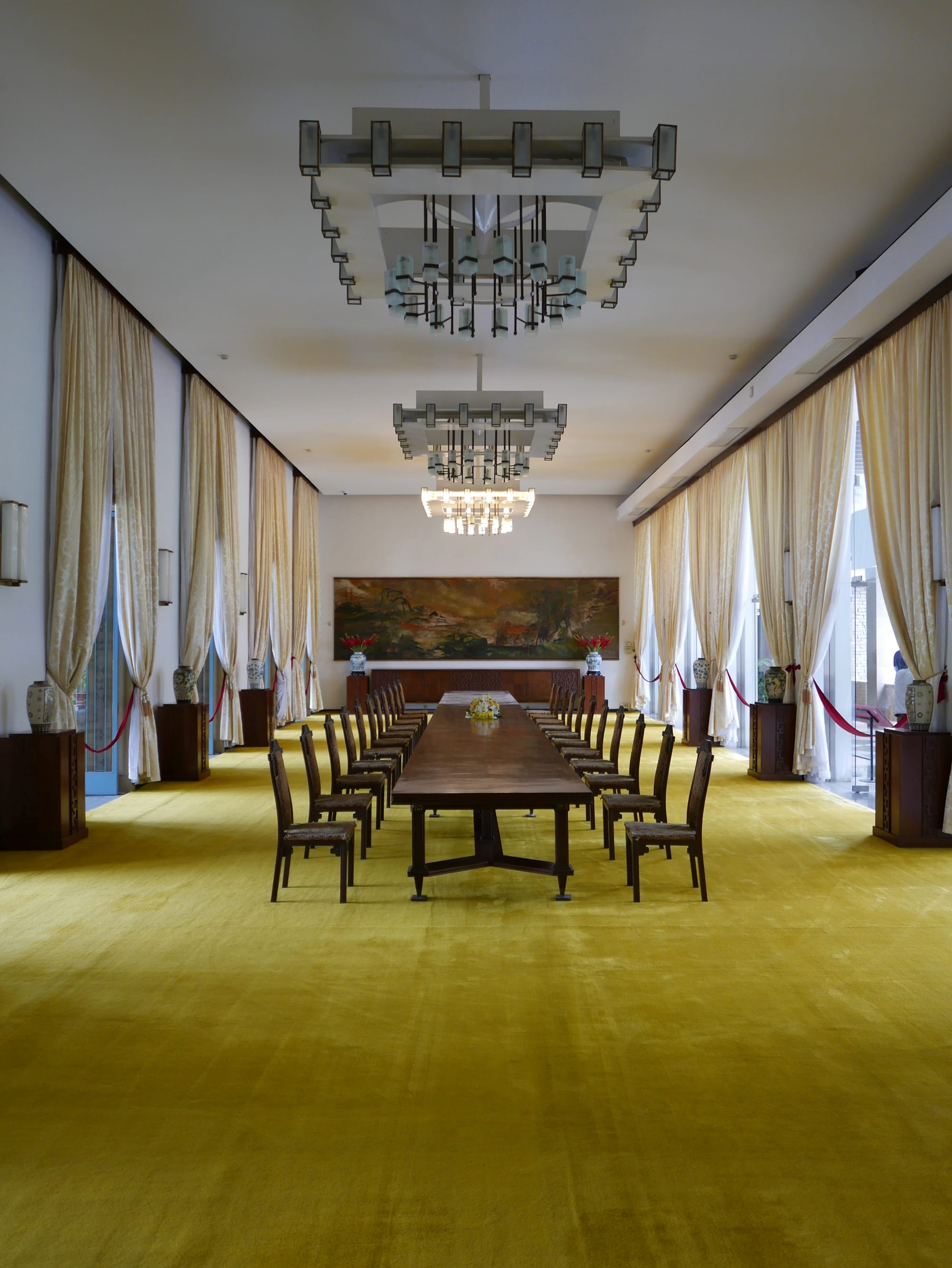
The Cabinet Room (photograph below) in Dinh Thống Nhất (Independence Palace / Reunification Palace). The room was used for general meetings and meetings of the President and his ministers. The government of Vietnam consisted of a prime minister, 19 Cabinet ministers, and seven deputy ministers (this arrangement was made by the decree of President Thieu in 1967).
Between 1967 and 1975, there were five Cabinet reshuffles, with General Tran Thien Khiem being the longest-serving Cabinet member (six years). The last Cabinet was appointed on 29 April 1975 under Prime Minister Vu Van Mau. It was being presented to the President on 30 April 1975 at 10 am when the formal statement of surrender confirming the end of hostilities was broadcast on Saigon Radio by President Duong Van Minh. The surrender signalled the transfer of power from the Republic of South Vietnam to the Provisional Revolutionary Government.
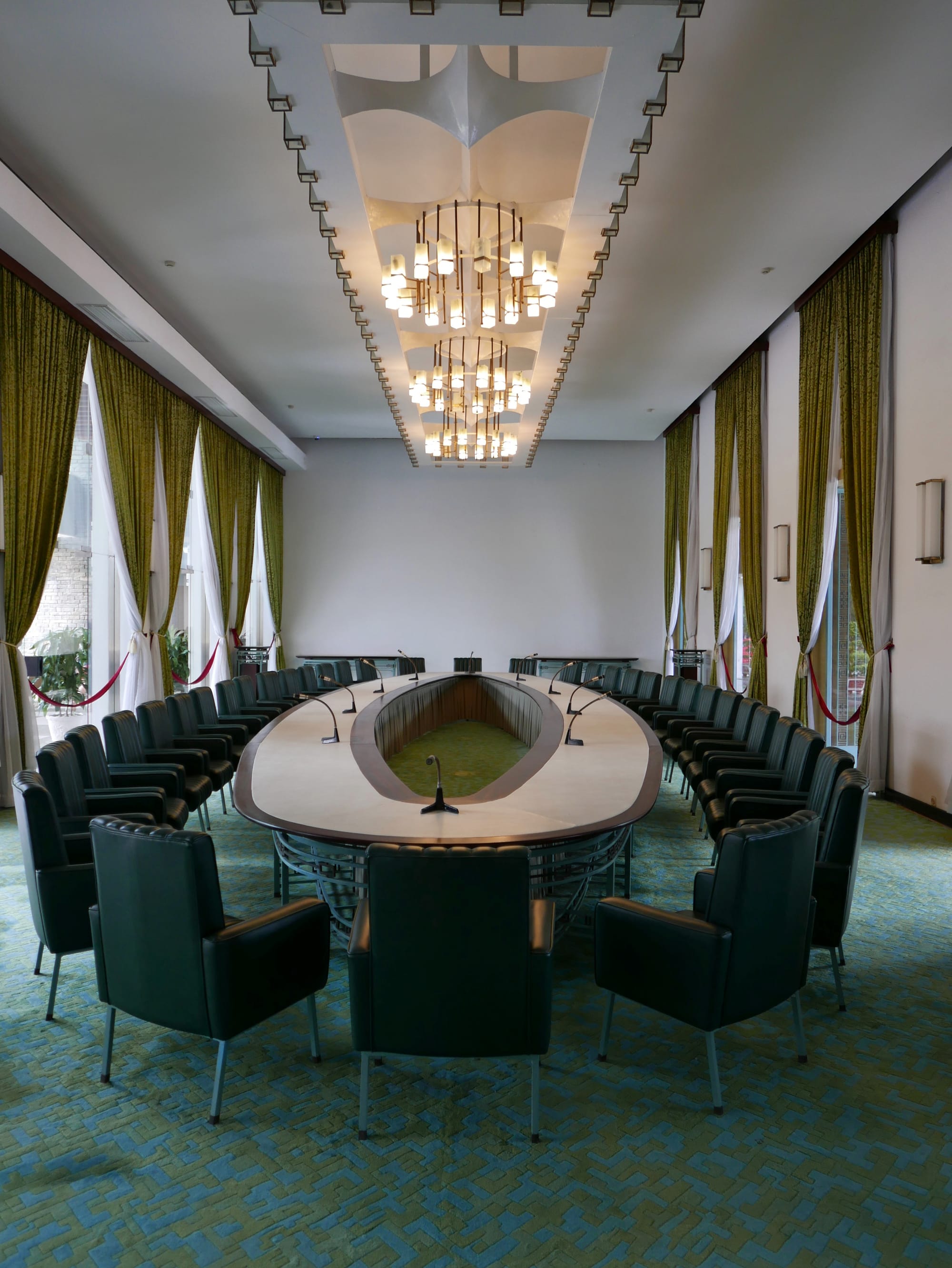
Below is a photograph of the main conference hall in the Dinh Thống Nhất (Independence Palace / Reunification Palace). It was in this hall on 21 April 1975, at 7:30 pm, that President Thieu delivered his resignation speech. The situation was precipitated by a letter that President Thieu wrote to the US president on 25 March 1975 requesting more air support and the bombing of areas under the control of the Vietnamese Revolutionary Forces. This appeal was rejected.
President Thieu spoke for over two hours about the country’s situation and the potential impact of America’s decision to stop their support. He was succeeded by his Vice President, Tran Van Huong, who pledged to continue the struggle until the “bitter end”. He resigned a week later and was replaced by General Duong Van Minh, who surrendered to the Provisional Revolutionary Government on 30 April 1975.
President Thieu died in Boston, USA, in 2001.
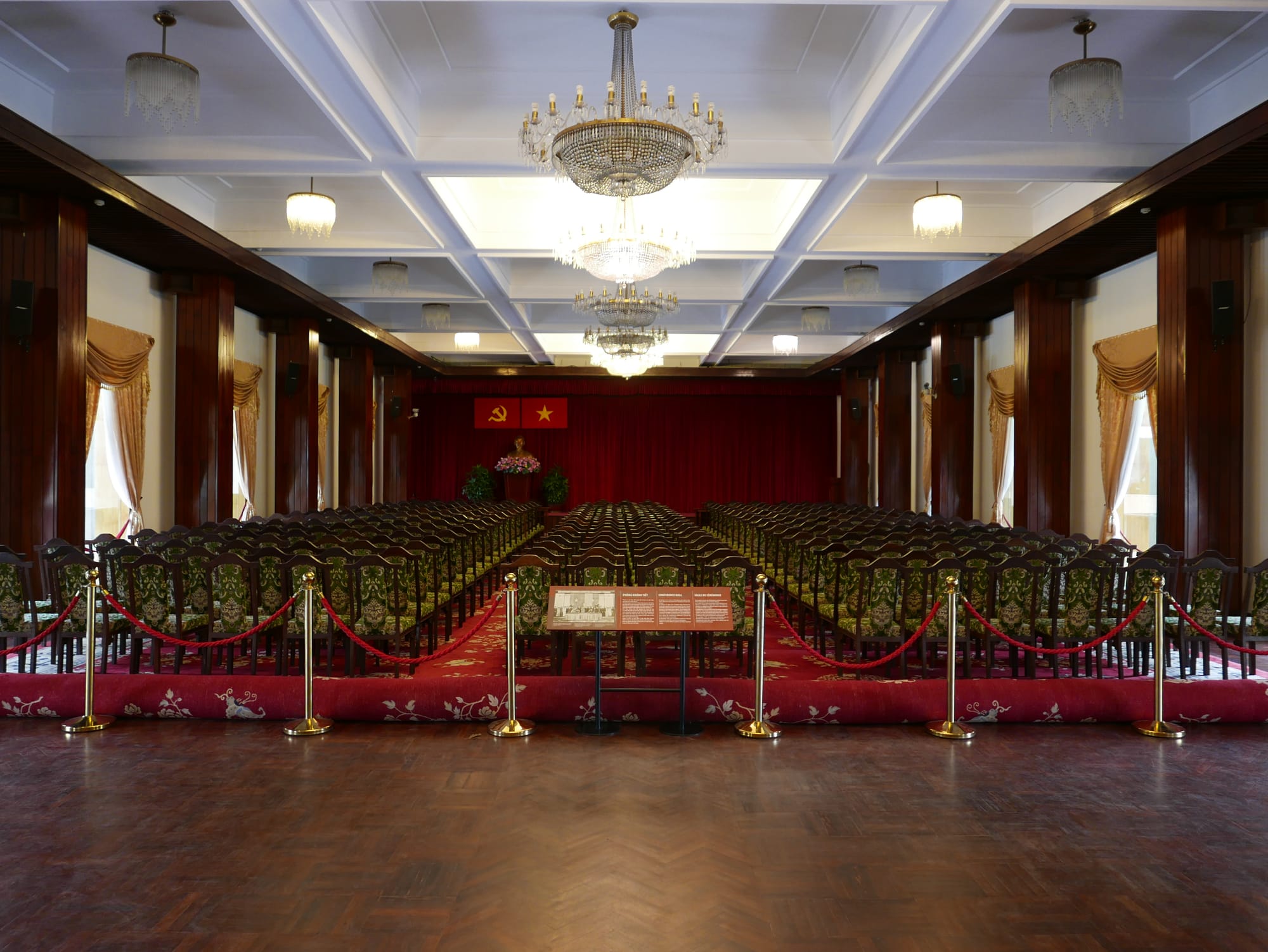
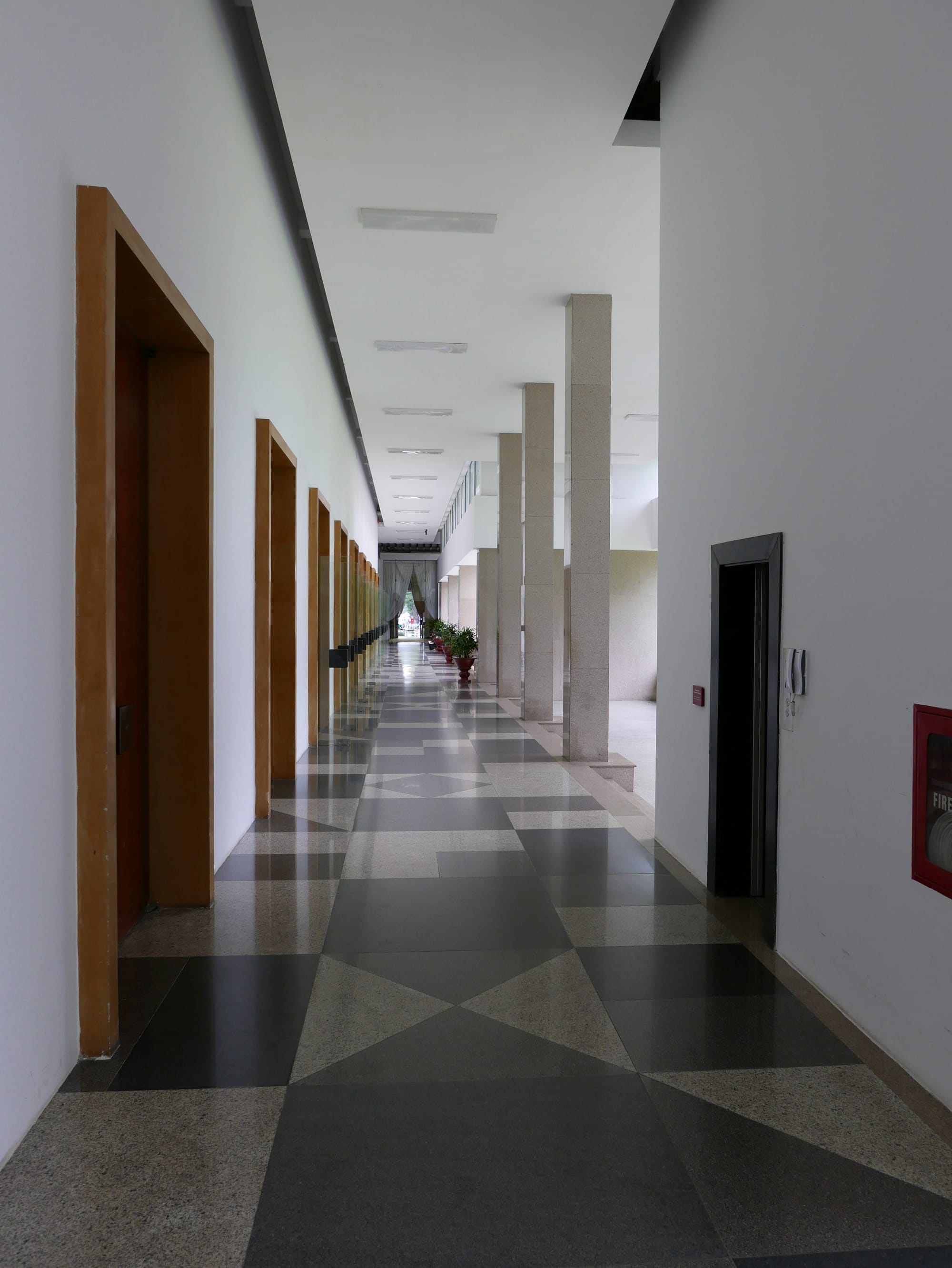
The National Security Council Chamber (photograph below) was used for meetings between the President, his senior advisers, and the US advisers.
On 25 March 1975, at 9:30 am, President Thieu ordered his senior General Ngo Quang Truong to evacuate the city of Hue and to mount a defence of Danang. On 3 April 1975, President Thieu met with a delegation of US congressmen in this room, along with the Vietnamese senior military leaders, to discuss the military situation in Vietnam.
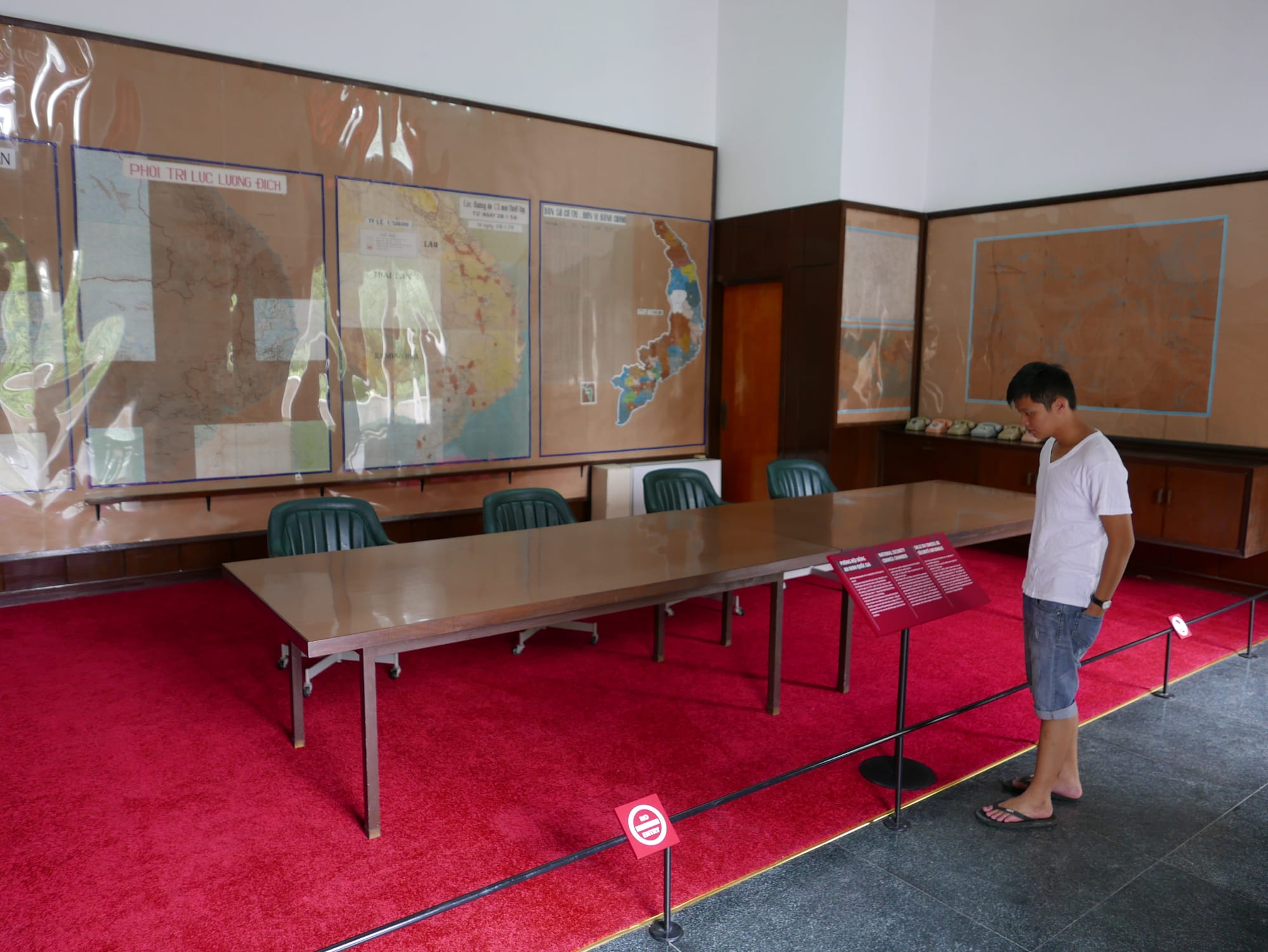
The Presidential Office (photograph below) was surprisingly spartan.
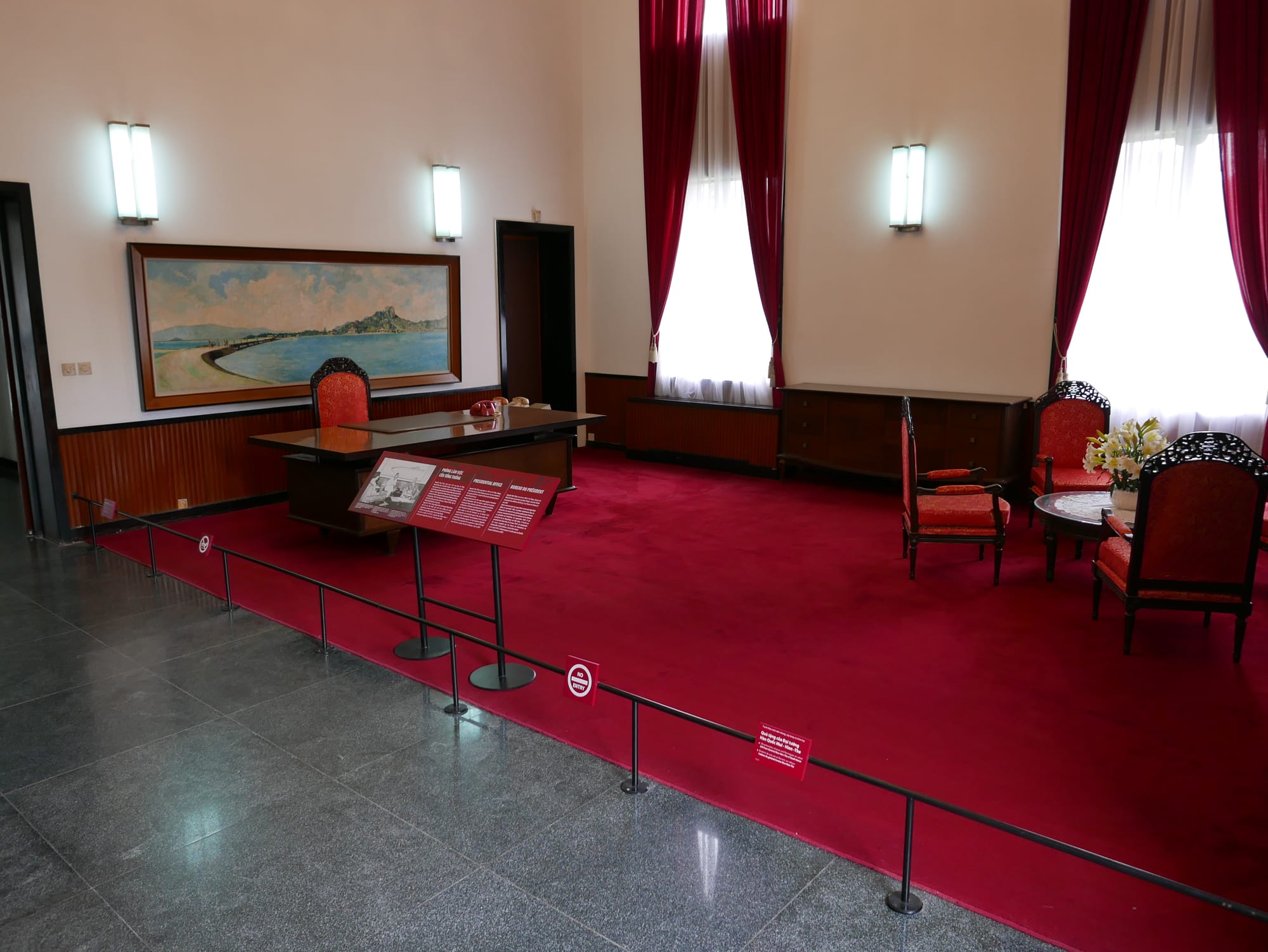
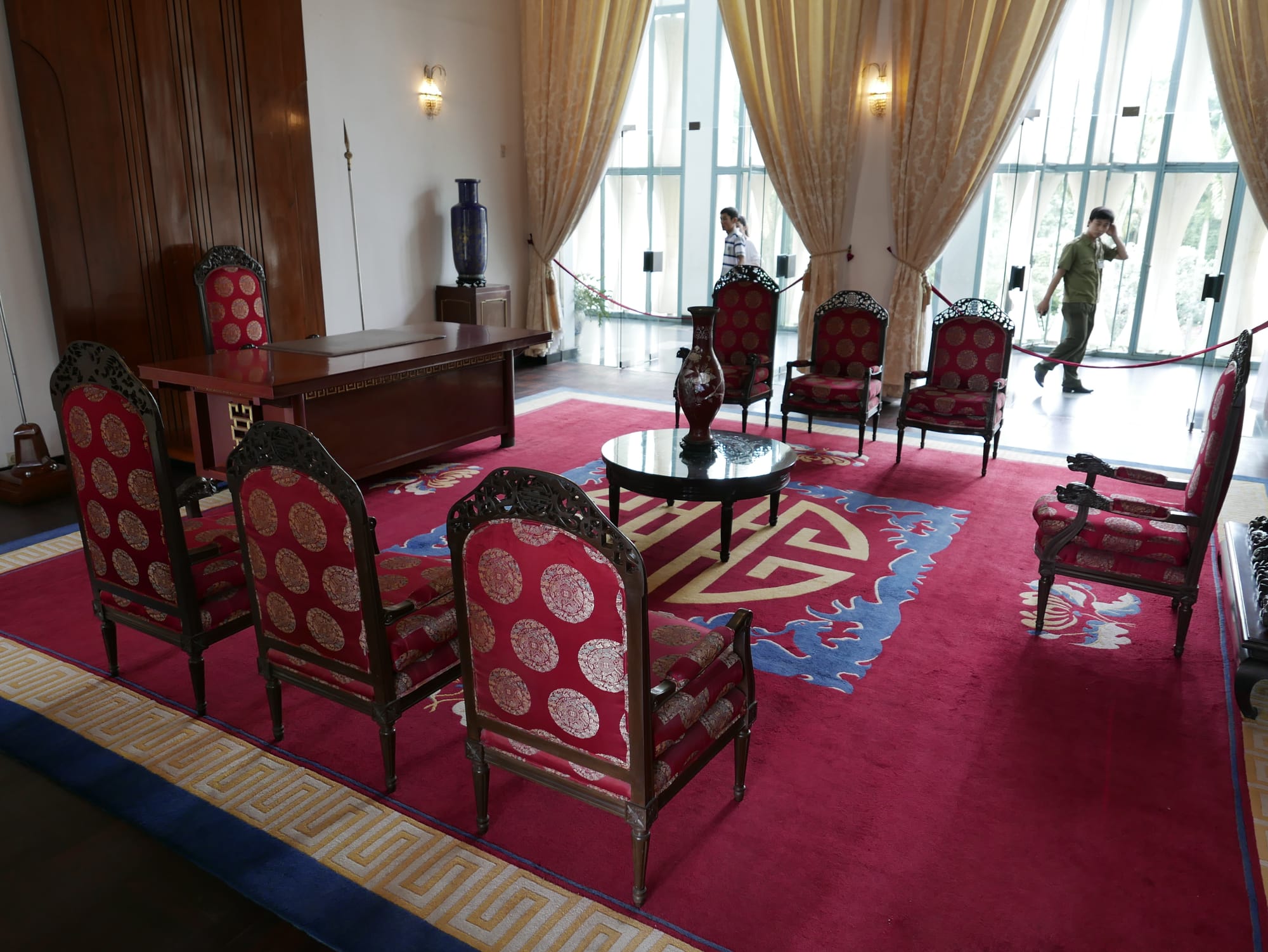
The view from the Palace to the main gate, through which the tanks rolled on 30 April 1975.
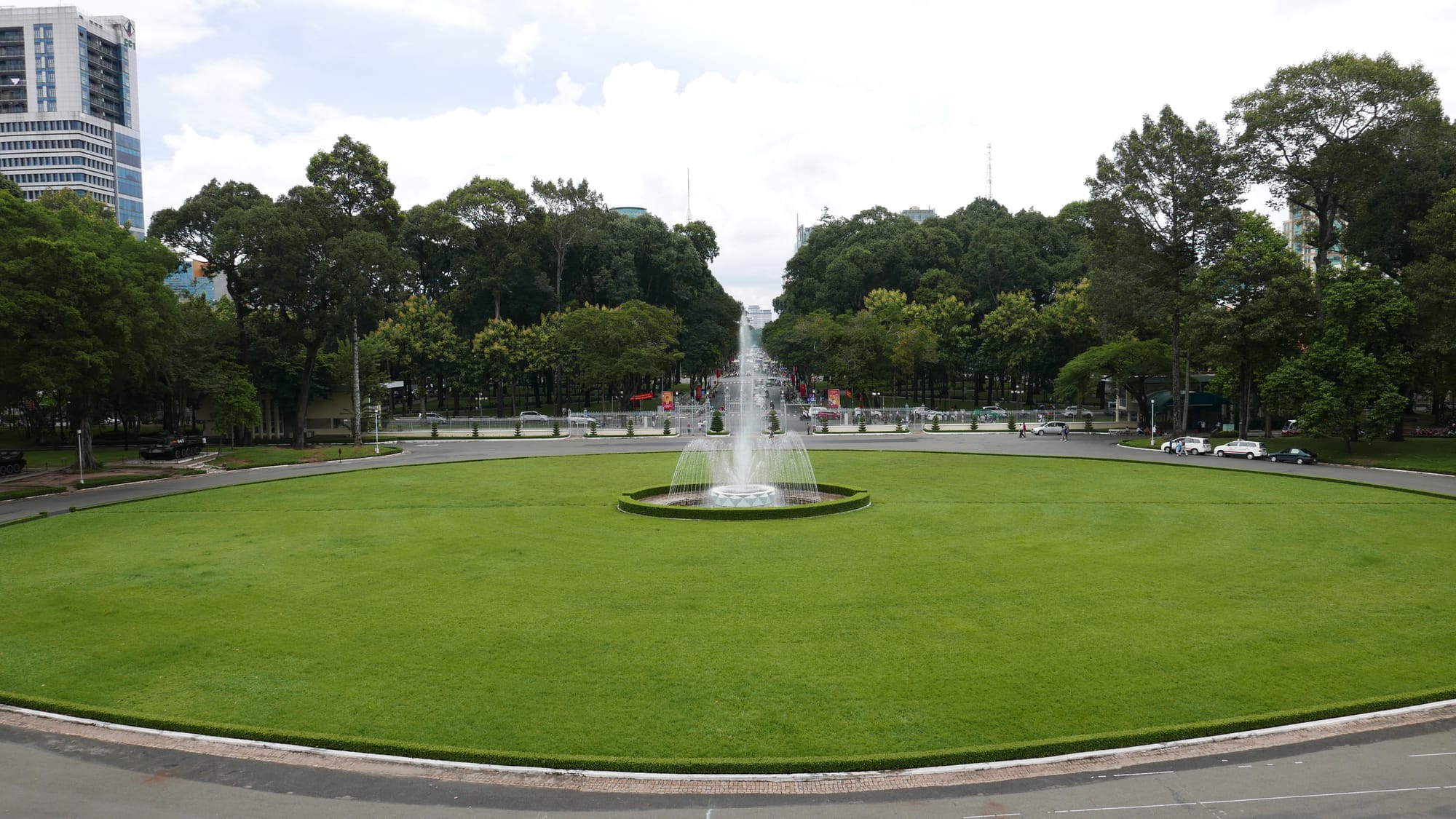
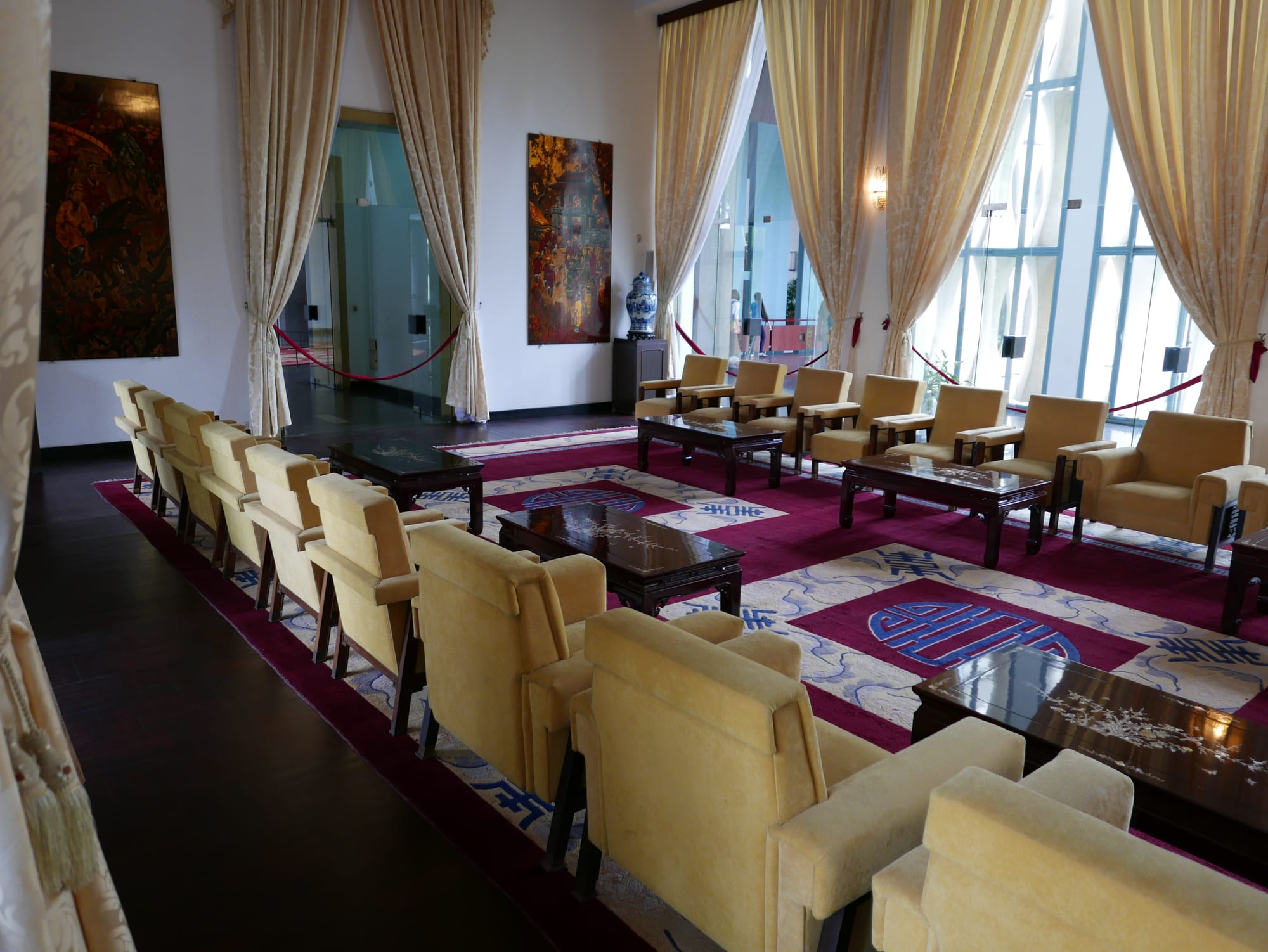
The reception rooms in the palace had beautiful carpets.
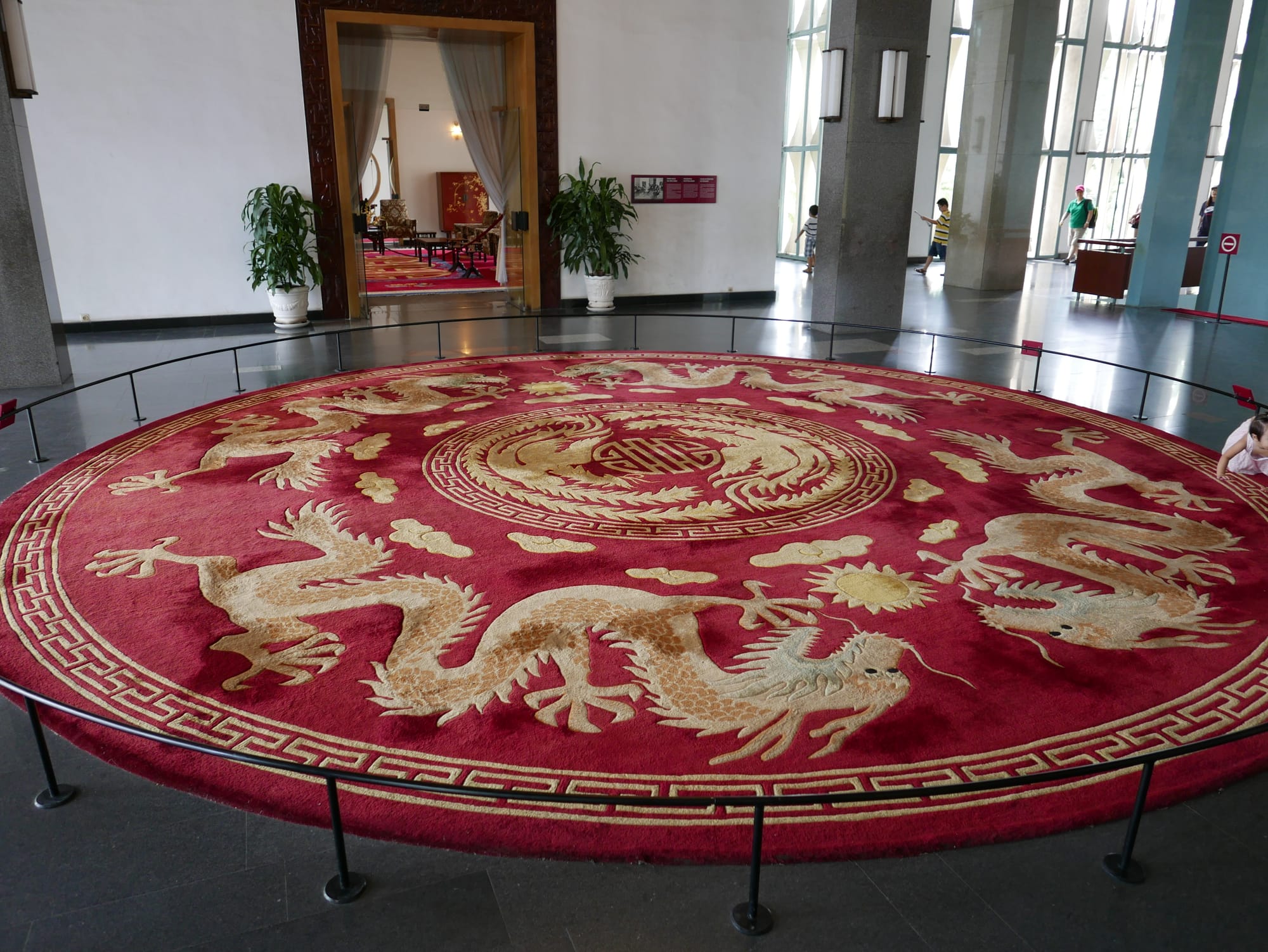
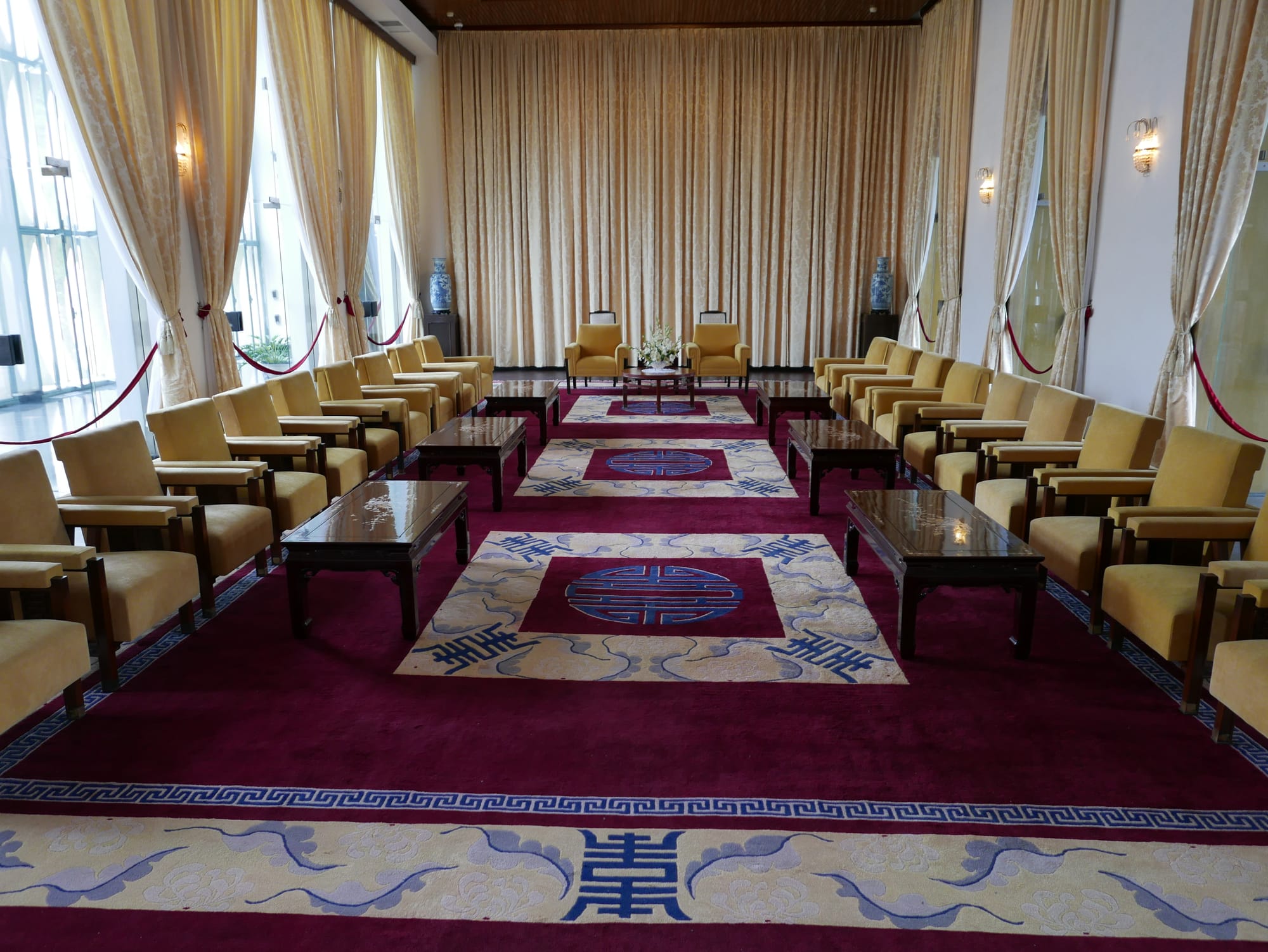
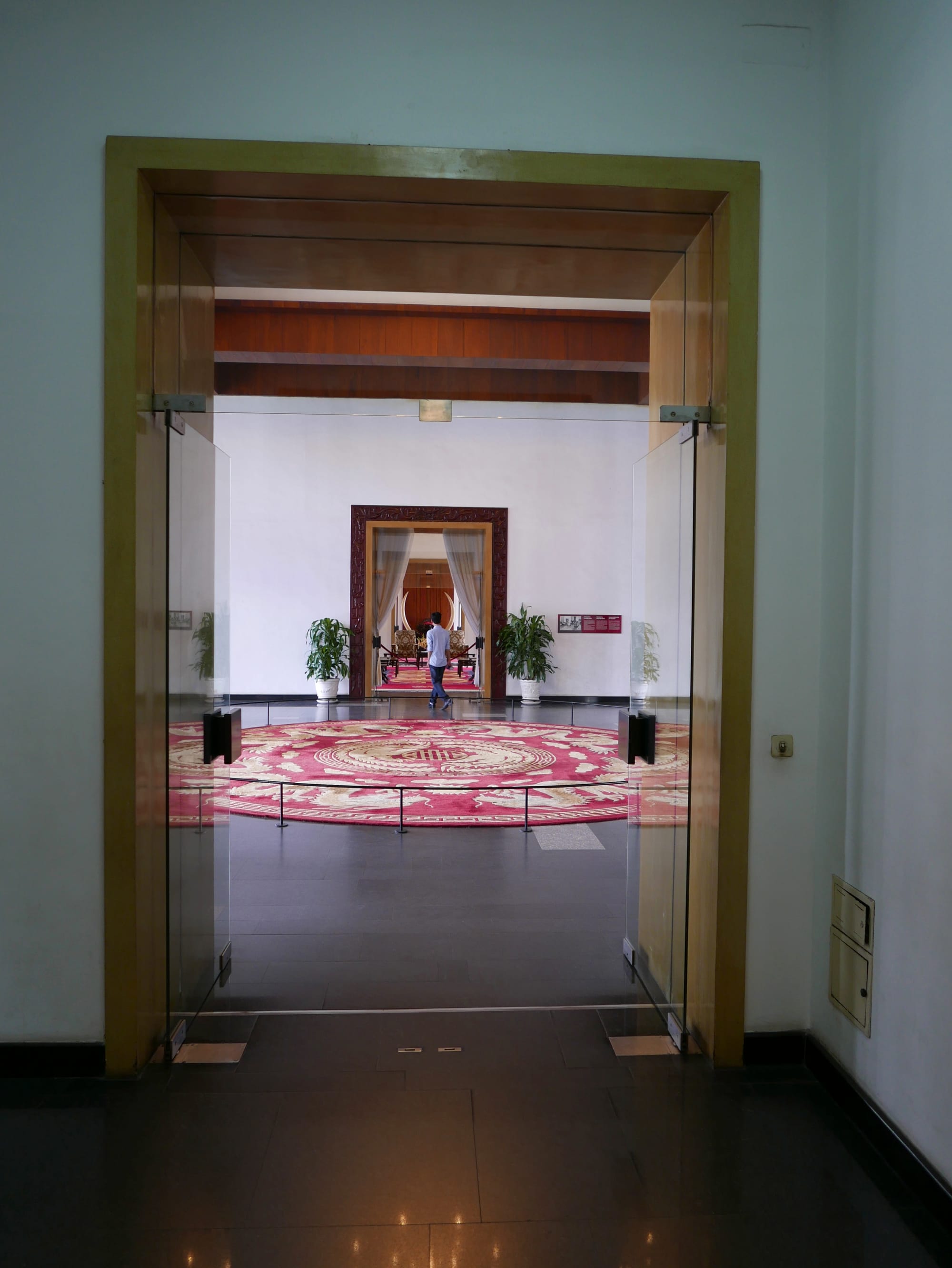
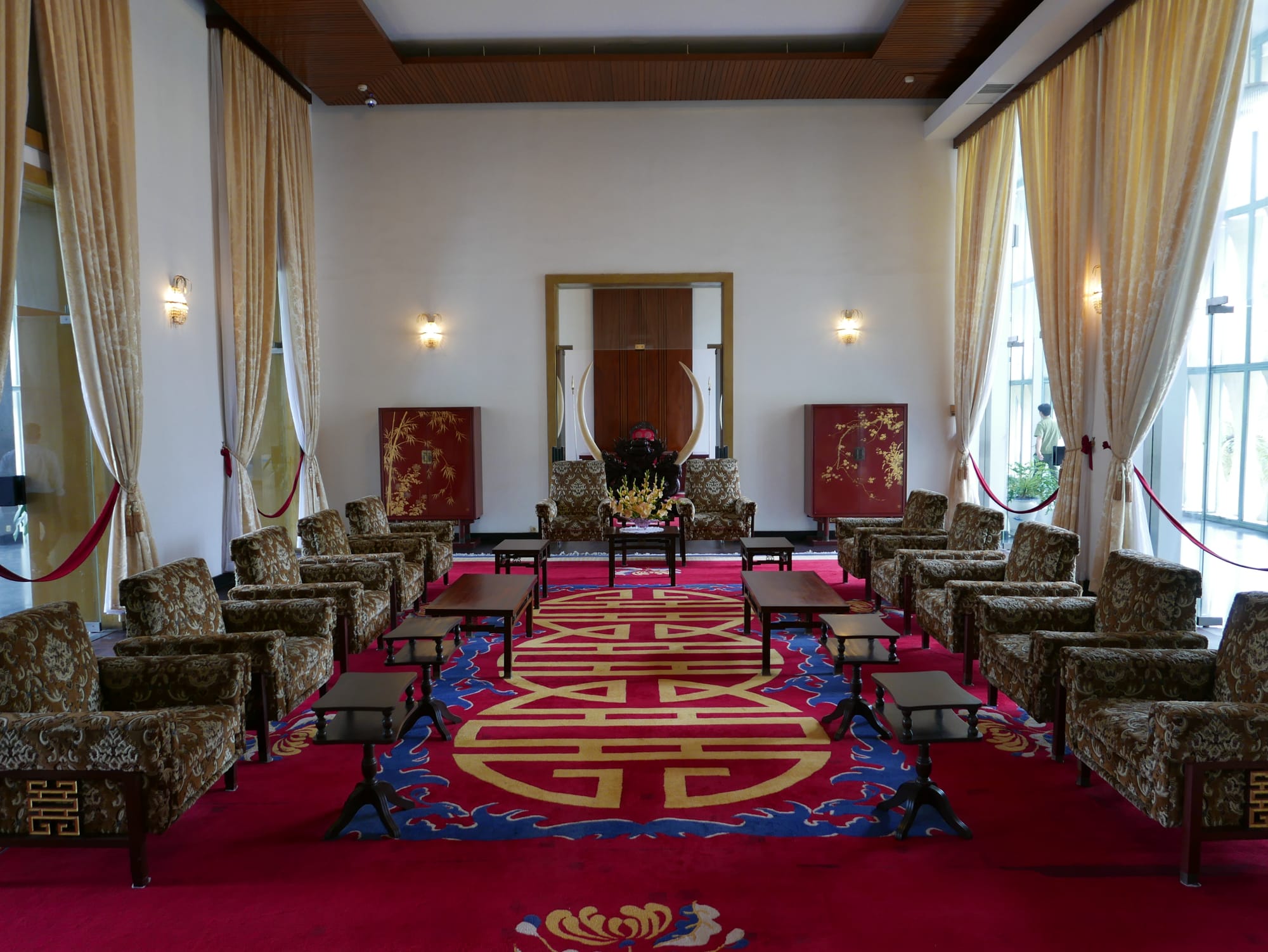
Foursquare: Independence Palace
